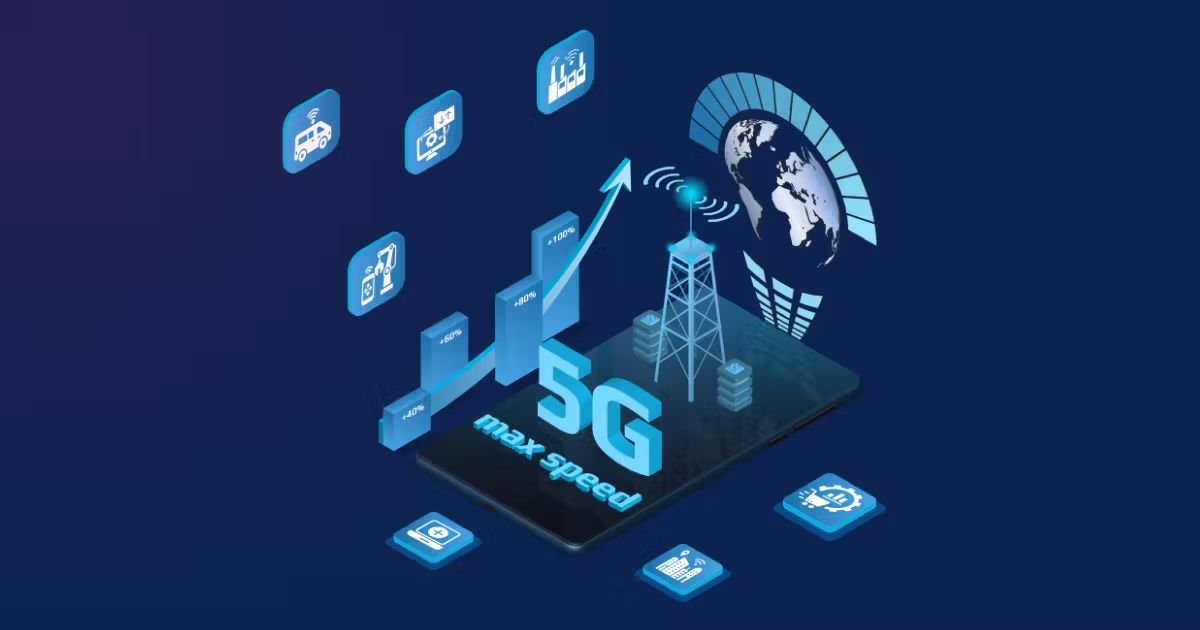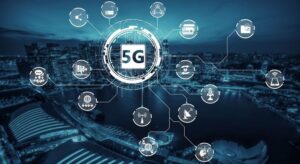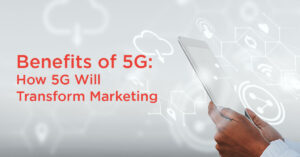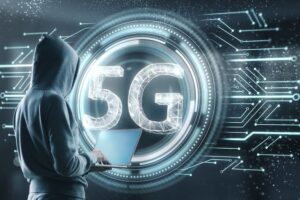The advent of 5G technology promises to be a game-changer in many sectors, but perhaps none more so than in the world of the Internet of Things (IoT) and smart cities. IoT refers to the network of interconnected devices that communicate and share data, while a smart city uses technology, data, and IoT devices to improve urban living, enhance sustainability, and increase efficiency. As both of these concepts continue to evolve, the rollout of 5G networks holds the potential to significantly enhance their capabilities, unlocking new possibilities for innovation, connectivity, and smarter, more efficient urban environments.
In this article, we’ll explore how 5G technology can improve the performance of IoT devices and applications, revolutionizing the way we live, work, and interact with the world around us. From enhanced connectivity to enabling real-time data processing, 5G is set to transform the development of smart cities and accelerate the widespread adoption of IoT solutions.
The Role of 5G in the Internet of Things (IoT)
1. Ultra-Low Latency for Real-Time Communication
One of the key features of 5G is its ability to provide ultra-low latency. Latency refers to the delay between sending and receiving data. In the case of IoT devices, especially those used for critical applications such as healthcare, transportation, and manufacturing, even small delays can have significant consequences. For example, in a smart car network, a delay in communication between vehicles could result in accidents or poor traffic management.
5G’s low latency—often as low as 1 millisecond—allows IoT devices to communicate in near real-time, which is essential for applications that require quick decision-making and responsiveness. Whether it’s autonomous vehicles, remote surgeries, or real-time traffic monitoring, 5G can ensure that data is transmitted almost instantaneously, significantly enhancing the effectiveness of IoT systems.
2. Increased Device Connectivity and Scalability
As the number of IoT devices continues to grow—expected to reach 50 billion by 2030—the need for reliable, high-capacity networks becomes critical. Traditional 4G networks may struggle to handle this massive volume of connected devices simultaneously. 5G addresses this challenge by offering greater bandwidth and capacity, allowing it to support millions of devices per square kilometer.
This massive device connectivity enables large-scale IoT deployments without the risk of congestion or slowdowns. Cities and businesses can scale their IoT networks with ease, connecting a wide variety of devices—from smart meters and sensors to wearables and industrial machinery—without worrying about network bottlenecks. The ability to handle a vast number of simultaneous connections opens up new possibilities for IoT-driven applications, such as smart grids, energy-efficient buildings, and environmental monitoring systems.
3. Higher Data Speeds for Faster Information Sharing
5G technology offers much higher data speeds than its predecessors. 4G networks can provide speeds of up to 1Gbps, whereas 5G has the potential to deliver speeds of up to 20Gbps under optimal conditions. This leap in data speeds enables faster data transfer between IoT devices, allowing them to share and process large amounts of information more quickly.
For instance, in a smart healthcare system, wearable devices that track a patient’s health metrics can send real-time data to healthcare providers. With 5G, this data can be transmitted faster and more efficiently, enabling timely medical interventions and improving patient outcomes. Similarly, smart factory systems can leverage 5G to transfer large datasets related to production efficiency, equipment performance, or inventory management, allowing for faster decision-making and process optimization.
4. Edge Computing and Real-Time Processing
While 5G significantly improves data transmission speeds, it also complements edge computing—a model where data is processed closer to the source, rather than being sent to centralized cloud servers. In IoT applications, edge computing helps reduce the latency associated with sending data to distant servers and waiting for a response.
With 5G networks, the combination of edge computing and real-time data transmission enables IoT devices to process and analyze information locally, allowing for more efficient and faster responses. For example, in a smart city, IoT sensors in traffic lights can instantly process data on traffic flow and adjust signal timings in real-time to reduce congestion. This local processing reduces the dependence on centralized servers, speeding up decision-making processes and improving the overall performance of IoT systems.
The Role of 5G in Smart Cities
1. Improved Public Services and Infrastructure Management
5G has the potential to transform the management of public services and infrastructure within a city. With the ability to support thousands of IoT sensors and devices across urban areas, 5G can help cities monitor and manage resources more efficiently.
For example, smart street lighting systems can use IoT sensors to adjust lighting based on real-time data, reducing energy consumption and operational costs. Similarly, smart water management systems can use IoT devices to monitor water usage, detect leaks, and optimize water distribution. With 5G networks, these systems can transmit data faster and more reliably, allowing for real-time monitoring and more responsive management of public services.
Moreover, smart waste management systems can use IoT devices to monitor waste bin levels, optimizing collection routes and reducing waste collection costs. 5G enables these systems to communicate quickly and effectively, making cities smarter and more efficient in their daily operations.
2. Smart Transportation and Traffic Management
Transportation is one of the areas in which 5G will have a significant impact in smart cities. With the rise of autonomous vehicles, connected traffic infrastructure, and real-time traffic monitoring, the demand for reliable, high-speed communication is essential.
5G will enable vehicle-to-everything (V2X) communication, allowing vehicles to communicate with each other and with the surrounding infrastructure (such as traffic lights, road signs, and traffic cameras). This real-time exchange of data can improve traffic flow, reduce accidents, and increase the overall safety and efficiency of transportation systems.
For instance, if a vehicle detects an obstacle in its path, it can instantly communicate with nearby vehicles to warn them and prevent accidents. Similarly, smart traffic lights can adjust signal timings based on traffic conditions, reducing congestion and ensuring smoother traffic flow.
3. Enhancing Public Safety and Emergency Response
Public safety is a major concern in any city, and 5G has the potential to improve emergency response times and overall safety. Smart surveillance systems, including CCTV cameras and IoT sensors, can detect unusual activity or emergencies, such as accidents or fires, and immediately alert authorities.
5G enables real-time video streaming from surveillance cameras, allowing emergency responders to assess situations quickly and make better-informed decisions. In critical situations, such as fire outbreaks or medical emergencies, 5G’s low latency ensures that first responders can receive real-time updates and data, improving the speed and accuracy of their response.
Additionally, smart wearable devices that track the health and location of emergency personnel can provide critical information to their teams in real-time, ensuring that help arrives as quickly as possible in emergencies.
4. Energy Efficiency and Sustainability
As cities work toward becoming more sustainable, 5G networks will play a crucial role in promoting energy efficiency and reducing environmental impact. By connecting a large number of smart meters, sensors, and energy management systems, 5G can enable cities to better monitor and manage energy consumption.
For example, smart grids can adjust energy distribution based on real-time demand, reducing energy waste and improving efficiency. Cities can also use 5G-enabled IoT sensors to monitor air quality, noise levels, and temperature, helping to create healthier and more sustainable environments. With more data and faster processing, cities can make more informed decisions about energy usage and sustainability efforts, contributing to green initiatives and the reduction of carbon emissions.
5. Citizen Engagement and Smart Services
5G networks can empower citizens to actively engage with smart city services, making it easier for them to access important information, report issues, or participate in decision-making processes. For example, citizens can use mobile apps to report road damage, track public transport in real-time, or receive immediate updates about local events and emergencies.
By enabling interactive communication between city authorities and residents, 5G can foster greater transparency and participation in governance. This can lead to more responsive city management, where citizens can get involved in shaping the direction of their communities.
Conclusion
The deployment of 5G technology offers a transformative opportunity for the growth and development of both IoT and smart cities. With its ability to support ultra-low latency, massive device connectivity, higher data speeds, and real-time processing, 5G enhances the capabilities of IoT applications, making cities smarter, more efficient, and sustainable.
From smart traffic management to enhanced public safety and sustainable energy use, 5G will be at the heart of the next generation of urban infrastructure and services. As we continue to witness the evolution of smart cities, 5G technology will play a pivotal role in enabling a future where connectivity, efficiency, and innovation go hand in hand.
By embracing 5G and integrating it into IoT networks, cities around the world can enhance the quality of life for their residents, reduce environmental impact, and create safer, more sustainable urban environments. The future of urban living is interconnected, efficient, and intelligent—and 5G will be the driving force behind it.




